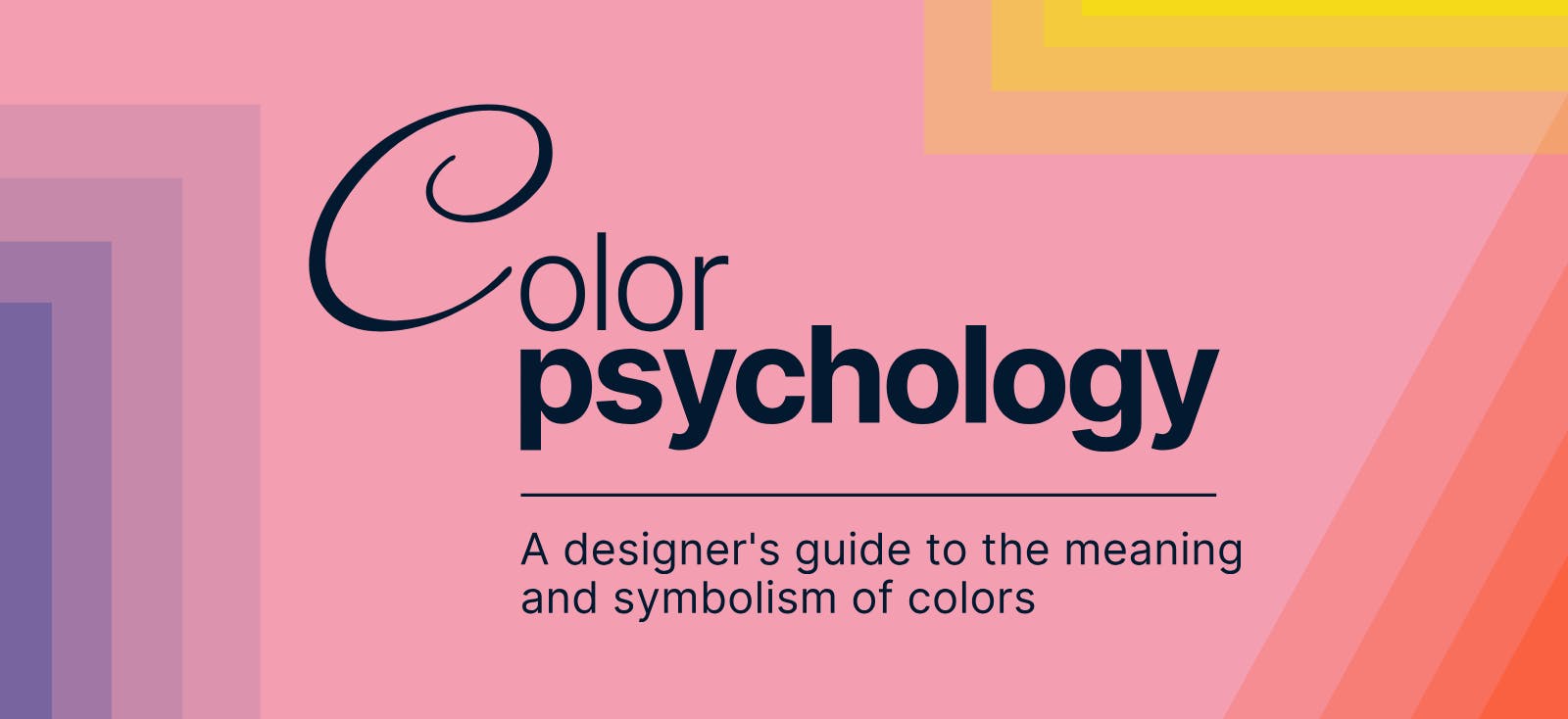Product
Templates
Resources
Company
Home
Blog
Tutorials
RGB vs. CMYK vs. Pantone: When and how to use each
RGB vs. CMYK vs. Pantone: When and how to use each

Ever designed something that looked perfect on your screen, only to have the printed version turn out completely different?
Maybe your deep blues lost their intensity, or that bold red shifted toward orange. If this sounds familiar, you’re not alone. Color inconsistency is one of the biggest headaches for graphic designers, and the key to avoiding it lies in choosing the right color model.
If you’re working on branding, digital graphics, or print materials, it’s important to understand how RGB, CMYK, and Pantone affect your final design.
Each system serves a different purpose:
- RGB (Red, Green, Blue) is used for screens—websites, social media posts, digital ads, and UI design.
- CMYK (Cyan, Magenta, Yellow, Black) is designed for printed materials like brochures, business cards, and packaging.
- Pantone (PMS - Pantone Matching System) ensures precise color matching across different printing processes.
And here’s why this matters: Research shows that consistent brand colors can increase brand recognition by up to 80%.
Imagine if McDonald's yellow varied across different signs or Apple’s space gray shifted unpredictably between products. A lack of color consistency weakens brand identity and confuses consumers.
In this guide, we’ll break down the key differences between RGB, CMYK, and Pantone, when to use each, and how to convert colors without losing vibrancy.
By the end, you’ll have a solid understanding of how to keep your designs looking sharp—both on screen and in print.
Understanding RGB

The RGB color model has been around since the 19th century, when scientists discovered that the human eye has three types of color receptors for red, green, and blue.
Fast forward to 1861, and physicist James Clerk Maxwell proved that RGB color mixing could be used in photography by projecting images through red, green, and blue filters.
By the 1950s, color television used RGB phosphors to bring full-color broadcasts to homes worldwide. And in the 1980s, the first computer screens with full-color graphics adopted RGB as the industry standard.
Today, whether you’re watching Netflix, playing a video game, or designing a website, you’re looking at an RGB-based display.
Why RGB is the standard for digital screens?
Here’s a fun trick: If you take a magnifying glass and look closely at your computer or phone screen, you’ll see those tiny red, green, and blue elements lighting up in different intensities. This is how all digital images are formed!
Those are called sub-pixels, and they blend together to create the colors you see on-screen. Every TV, laptop, smartphone, tablet, and LED billboard uses the RGB model to display colors because screens emit light, rather than reflect it.
Graphic designers working on web design, social media graphics, digital art, and UI/UX projects use RGB color mode to ensure their work looks vibrant and accurate on digital devices.
What is RGB and how RGB color mixing works?
RGB stands for Red, Green, and Blue—the three primary colors of light. In this system, colors are created by mixing different intensities of these three colors. This system allows for the creation of millions of colors by adjusting the intensity of each of the three components.
The more light you add, the brighter the color gets. That’s why RGB is called an additive color model—when you mix all three colors at full intensity, you get white, and when there’s no light at all, you see black.
Think of RGB like a stage light show. When you shine a red and green spotlight together, the stage appears yellow. Add blue light, and it turns white.
Unlike paint mixing (where adding more colors makes things darker), you may have noticed that if you play around with an RGB color picker, adding more light makes colors brighter.
Here’s how colors mix in RGB:
- 0% red, 0% green, 0% blue = Black
- 100% red, 100% green, 100% blue = White
- 100% red + 100% green = Yellow
- 100% red + 100% blue = Magenta
That’s why bright neon colors look amazing on a screen but often don’t print the same way—RGB colors can be much brighter than what standard ink can reproduce.
Understanding CMYK

If RGB is the king of digital design, CMYK rules the world of printing. Ever printed something that looked less vibrant than it did on your screen?
That’s because printers don’t use light—they use ink.
What is CMYK?
CMYK stands for Cyan, Magenta, Yellow, and Black (K). Unlike RGB, which creates colors by adding light, CMYK creates colors by subtracting light.
This is why it’s called a subtractive color model—as you add more ink, colors get darker instead of brighter.
Here’s how it works:
- White paper reflects light.
- Cyan, magenta, and yellow inks absorb (subtract) certain wavelengths of light, leaving only the colors we see.
- Black ink (K) is added for depth and contrast, since mixing cyan, magenta, and yellow alone doesn’t create a perfect black.
Why CMYK is used for printing?
Printers work by layering tiny dots of cyan, magenta, yellow, and black ink (instead of light) to create a full spectrum of colors.
If you’re designing for business cards, brochures, posters, packaging, or magazines, you should work in CMYK mode from the start to ensure accurate printed colors.
We understand that many print-on-demand (POD) users have faced challenges when discovering late in the process that their RGB-based designs don’t translate well to print.
If the design editor you are using does not support native CMYK support, you can convert your RGB colors to CMYK manually using tools like Color Designer's RGB to CMYK converter.
You could also use Google’s RGB Color Picker to get the RGB, CMYK, HSV, and HSL values from a hex color code. While this won’t be a one-click solution, it will help you get closer to print-ready colors.
How CMYK color mixing works
Unlike RGB, where adding colors makes things brighter, adding more CMYK ink makes things darker.
For example:
- Cyan + Magenta = Blue
- Cyan + Yellow = Green
- Magenta + Yellow = Red
- All three combined = Dark Brown/Black (which is why black ink is added separately)
In printing, black ink is used instead of mixing all three colors because it produces a deeper, more accurate black and saves ink.
Key differences between RGB vs. CMYK

At the core, RGB and CMYK are opposites in how they create color:
- RGB is an additive color model—it starts with black (the absence of light) and adds red, green, and blue light to create colors. The more light you add, the brighter the color becomes, and mixing all three at full intensity produces white
- CMYK is a subtractive color model—it starts with white paper and adds cyan, magenta, yellow, and black inks to absorb (subtract) certain wavelengths of light. The more ink you add, the darker the color gets, and mixing all three at full strength produces a muddy brown or black.
| Feature | RGB (Digital) | CMYK (Print) |
|---|---|---|
| Color model | Additive (light-based) | Subtractive (ink-based) |
| Primary colors | Red, Green, Blue | Cyan, Magenta, Yellow, Black |
| Mixing principle | More color = Brighter | More color = Darker |
| Best for | Screens, digital media | Printing, physical materials |
| Max brightness | Vibrant, neon-like colors | Muted, natural tones |
| Black production | 0% RGB = Black | Uses separate black ink |
If you design something in RGB but print it without converting to CMYK, colors may look duller or inaccurate. Some bright RGB colors simply don’t exist in CMYK ink, which is why proper color conversion is key when moving from screen to print.
Challenges in converting between RGB and CMYK
If you’re designing for both digital and print, you’ll need to make sure colors look good in both formats—but this isn’t always straightforward.
Here’s why converting from RGB to CMYK can be tricky:
- Loss of vibrancy – Bright RGB colors (like electric blues, hot pinks, and neon greens) will look less intense in CMYK.
- Blacks may not print true black – In RGB, setting all three values to zero gives you black. But in CMYK, black is created with a mix of inks—and using just K (black ink) often results in a washed-out gray instead of deep black.
- Unexpected color shifts – Some colors might shift slightly when converted from RGB to CMYK. A pure blue in RGB might print more purple, or a vibrant red might lean toward orange due to the way ink mixes.
Understanding Pantone: The gold standard for color consistency

So what happens when CMYK printing struggles with precise color reproduction? Enter Pantone—a system designed to eliminate color inconsistencies and ensure that what you design is exactly what gets printed.
What is the Pantone Matching System (PMS)?
The Pantone Matching System (PMS) is a standardized color system used across industries—from graphic design and printing to fashion and product manufacturing.
Unlike RGB and CMYK, which mix colors on the spot, Pantone colors are pre-mixed, standardized inks. This means that every Pantone color is consistent, no matter where or how it’s printed.
Think of it like ordering a specific paint color from a hardware store—if you ask for “Pantone 485 C,” you’ll get the exact same shade of red, whether it’s printed on a t-shirt, business card, or billboard.
How Pantone standardizes colors across different mediums
One of the biggest challenges in design is ensuring that colors look the same on different materials—a logo printed on paper, fabric, and plastic can all end up looking slightly different.
Pantone solves this problem by assigning specific color codes to each shade, allowing manufacturers and printers to match colors precisely across different mediums.
For example:
- A CMYK-printed version of a bright orange might vary slightly depending on the printer or ink batch. This is because CMYK uses process colors, which means colors are created by layering cyan, magenta, yellow, and black inks in tiny dots. Since each printer mixes these inks slightly differently, colors can vary slightly from one print job to another.
- A Pantone version of the same orange, however, is mixed from a standardized ink formula, ensuring no variation from one print job to the next. This is called “spot colors.” And yes, this ensures exact color consistency, no matter which printer or material is used.
This is why Pantone is the go-to system for branding—companies like Coca-Cola, Tiffany & Co., and Starbucks use Pantone colors to ensure their brand colors remain consistent worldwide, whether on a printed ad, product packaging, or store signage.
When to use RGB vs. CMYK vs. Pantone

To avoid surprises, always use the right color mode for your project from the beginning:
- Use RGB for: Anything meant for screens—websites, social media graphics, online ads, digital art, mobile apps, and videos. Since screens use light, RGB ensures vibrant, accurate colors in digital formats.
- Use CMYK for: Anything that will be printed—flyers, business cards, brochures, packaging, magazines, and posters. Working in CMYK helps avoid color shifts when the design is sent to a printer.
- Use Pantone for: High-precision printing where color consistency is essential—logos, branded packaging, and specialty materials like plastics, fabrics, or metals. Since Pantone uses pre-mixed inks, it ensures accurate, vibrant colors that CMYK can’t always replicate, especially for bold hues like neon or metallics.
Pro tip: If you’re creating a design for both digital and print, start in CMYK mode so that your printed version is accurate. You can always convert it to RGB later for digital use, but converting the other way around can cause unexpected color shifts.
If you want the same color consistency across different mediums, Pantone is a clear winner. However, you may want to check out your budget before proceeding because using Pantone colors can be more expensive than CMYK:
- CMYK printing is cheaper because it uses standard ink cartridges that layer colors during the printing process.
- Pantone requires custom-mixed inks, which means a separate ink well for each color—this can drive up printing costs, especially if multiple Pantone colors are used.
So when it comes to choosing between RGB vs CMYK vs Pantone for printed materials, it depends on what you are prioritizing:
| Feature | RGB | CMYK | Pantone |
|---|---|---|---|
| Color model | Additive (light-based) | Subtractive (ink-based) | Spot color system |
| Primary colors | Red, Green, Blue | Cyan, Magenta, Yellow, Black | Pre-mixed specific colors |
| Color mixing | Colors created by combining light; more light results in brighter colors | Colors created by combining inks; more ink results in darker colors | Each color is pre-mixed; no mixing during printing |
| Color range | Capable of producing a wide range of vibrant colors | Extensive color palette, including colors outside the CMYK gamut | |
| Consistency | May vary across different screens due to display settings | Color output can vary between printers and print runs | Ensures consistent color reproduction across various mediums and print runs |
| Cost implications | Not applicable to printing | Standard printing process; generally cost-effective | Can increase printing costs due to the need for specific inks and additional setup |
| Best for | Digital designs viewed on screens | General printing needs where exact color matching isn't critical | Projects where precise color matching is essential, such as brand logos and identity materials |
Choosing the right color model for your designs
Color is one of the most powerful tools in design, but getting it right depends on choosing the right color model for your project.
Remember:
- If you’re working on digital designs, RGB is the way to go—it ensures your colors look vibrant and accurate on screens.
- For printed materials, CMYK is essential to avoid unexpected color shifts.
- And when color consistency is critical, Pantone is the best choice, guaranteeing that your brand colors stay the same across different materials and print runs.
One of the biggest challenges designers face is color conversion—translating colors accurately between RGB, CMYK, and Pantone. This is where tools like an RGB color picker come in handy.
By using an RGB color picker, you can quickly identify and adjust color values to match your design’s needs, ensuring smooth transitions between digital and print formats.
At the end of the day, understanding how RGB, CMYK, and Pantone work together will save you from costly mistakes and frustrating color mismatches.
Whether you’re designing a website, printing business cards, or developing a brand identity, knowing when to use each color model ensures that your colors look just as good in print as they do on-screen.
Related articles

Design
Essential color theory guide for designers
This is your introductory guide to color theory. From color classification to how light impacts colo...

Design
The psychology of color: Designing with emotion in mind
Color isn’t just about aesthetics - it shapes perceptions, evokes emotions, and can help influence b...

Design
Mastering the color wheel: A designer's guide
Welcome to our deep dive into the color wheel - a cornerstone of professional design and a vital too...















